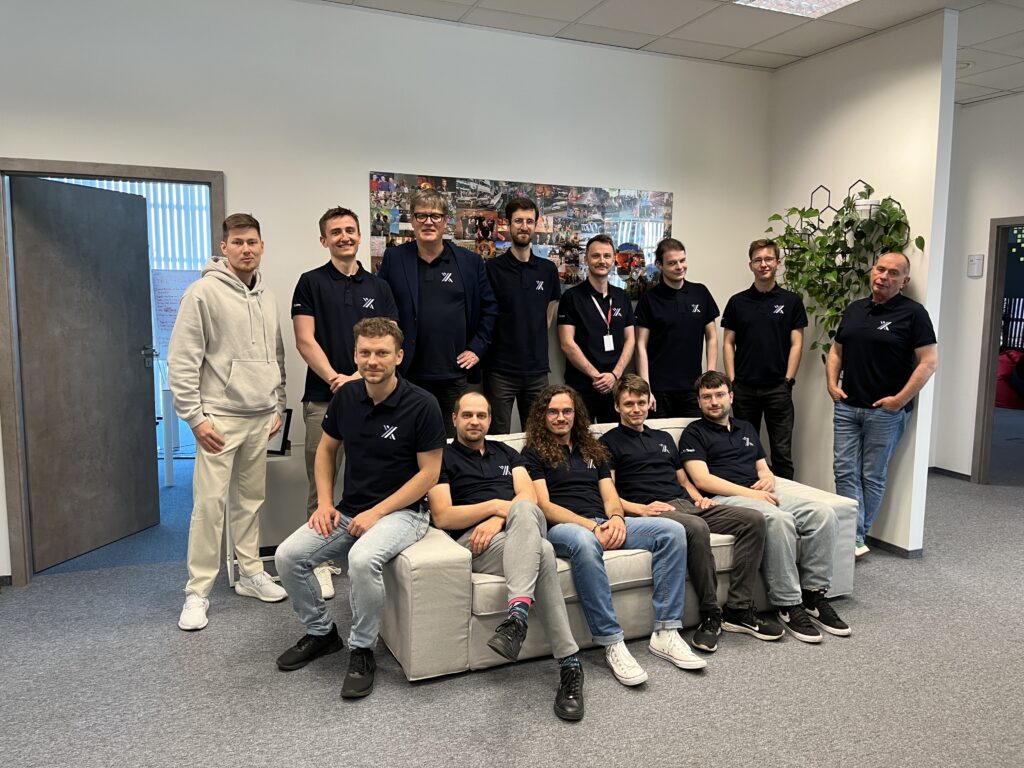For five intense days in Poznań, our engineers came together to tackle a single mission: prove that the XyronQ ecosystem can deliver full end-to-end warehouse functionality. What followed was a hands-on sprint of system architecture alignment, collaborative coding and real-time problem-solving. The goal? A working functional model where goods flow through a simulated warehouse, processes are triggered via telegram communication, and everything is visualized in 3D.

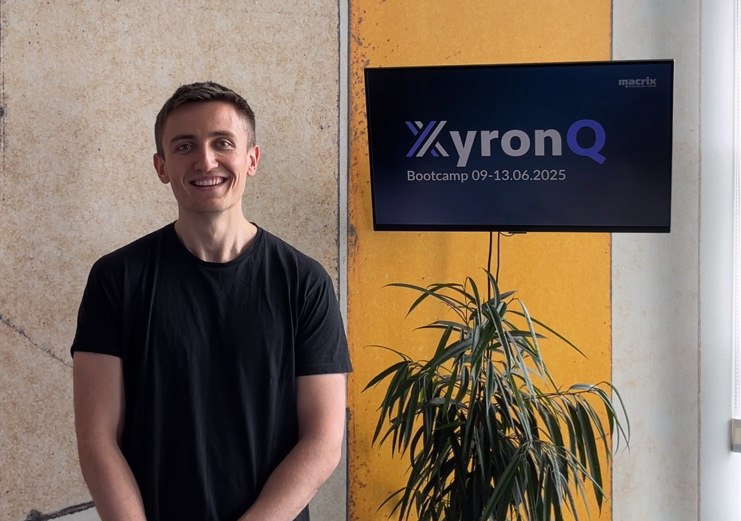
“The Team made great progress, solved many unknown issues, and spent a lot of sweat and energy delivering core functionality. We, stakeholders, are happy with the result even if some functionalities were skipped in favor of overcoming crucial issues.”
Kamil Wilkosz
“I’ve got this need to step back and really understand the full picture of the app we’re building, how it all works from start to finish. Not just for the client or management, but for us too, the devs. It helps to have something tangible, a first demo maybe, so we can all see where we’re heading and make sure it actually makes sense.”
Bartek Szczepanik
We needed to prove our layered architecture actually works end-to-end. We had this theoretical separation: Physical Layer for equipment, Transport Layer for routing, Communication Layer for PLC integration, plus 3D visualization – but we’d never actually seen a (simulated) pallet move through all these layers with live visualization working in real-time.
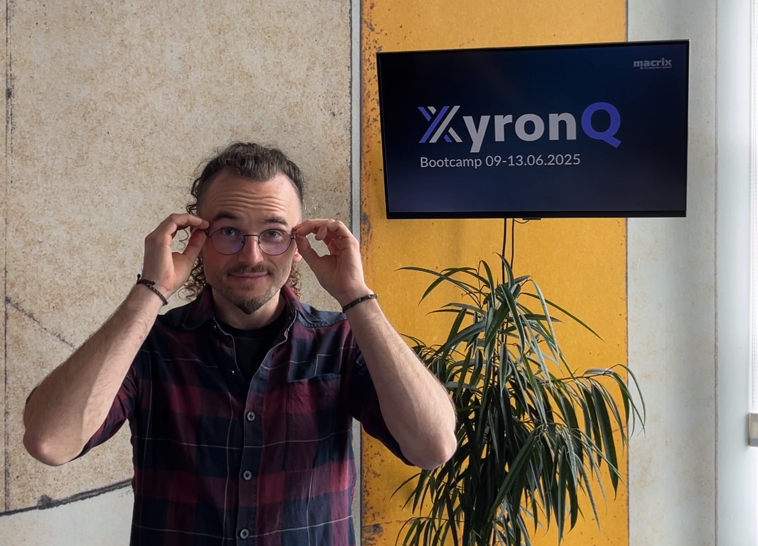

“We’re the R&D team – we put this bootcamp together, and the goal is to actually ship something by the end of the week. So I came here ready to work, sleeves rolled up, and we’re all in.
What really stood out to me on day one was the organization. The fact that we all sat down together in one room, had this big brainstorming session, and tried to figure out, based on what we’ve got, where we want to go and how to get there. That was powerful.”
Bartek Zając
“The complexity here is insane – so many processes, so many possible configurations, it’s wild. But what really matters to me is leaving the office each day knowing I actually delivered something. Might not be the cleanest code ever, but if it brings value to the business and the users, that’s a win.”
Stanisław Boboryk
XyronQ
XyronQ is a design and configuration environment for building project blueprints – initially for Warehouse Execution Systems (WES), but it’s flexible enough to support other domains in the future. It’s where a developer, or rather, a solution configurator, defines what exists in the warehouse and how it should operate. You can think of XyronQ as a design tool, a blueprint editor, or the foundation of the project’s design phase.
WES (Warehouse Execution System)
The Warehouse Execution System (WES) is the real-time software that brings your warehouse project to life. It runs based on the blueprint created in XyronQ, but it’s WES that actually executes warehouse tasks, like processing loading orders, communicating with PLCs or ERP systems, and even visualizing movements in 3D. Simply put, WES is the operational warehouse application that handles tasks in real time.
WARP (Workflow Assembly and Runtime Preparation)
WARP is the bridge between the design and the live system. It takes the templates and logic created in XyronQ and transforms them into a working WES application. Think of it like this: XyronQ is your architectural blueprint, and WARP is the construction crew that turns those plans into a fully functioning house – your WES system.
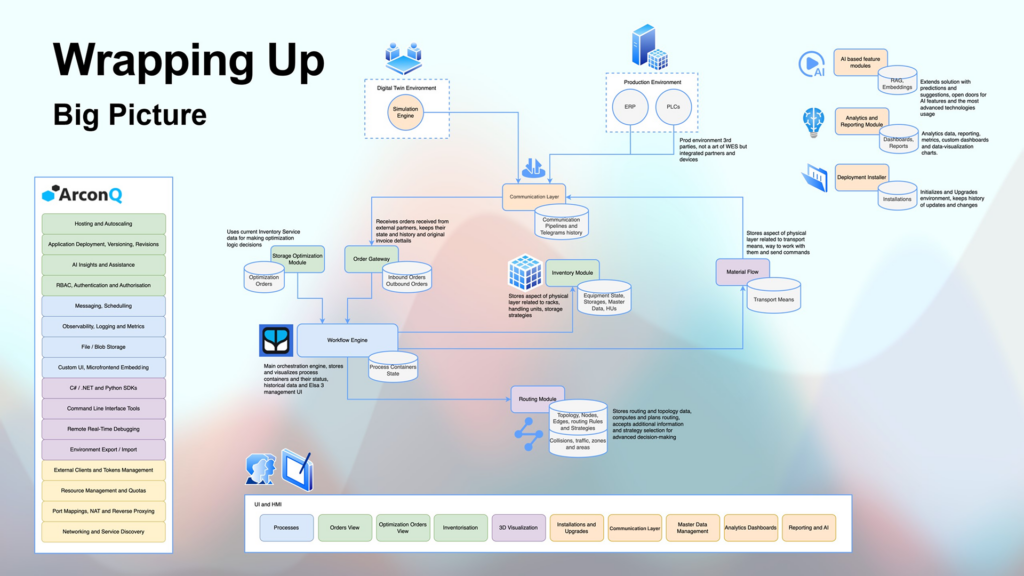
Compared to the previous bootcamp, this time tasks were divided much faster – split into seven main workstreams with clear responsibilities assigned to micro-teams. It came more naturally, since many of team members have been working together in this larger setup since December.
Rustam also kicked things off with 3 short presentations on Monday, outlining the scope of the bootcamp. At first, it all looked optimistic – maybe even too doable.
Our team stayed impressively agile throughout the bootcamp. Every morning kicked off with a daily stand-up to review progress and clear blockers. That’s how we made sure the team dynamics worked well from day one – through continuous communication that kept everyone aligned and the workflow smooth.
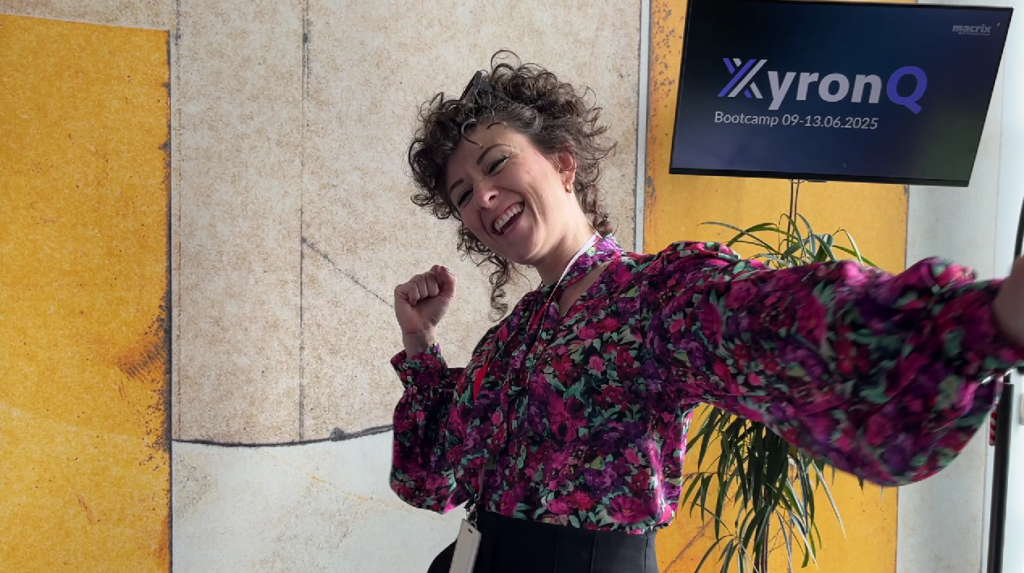
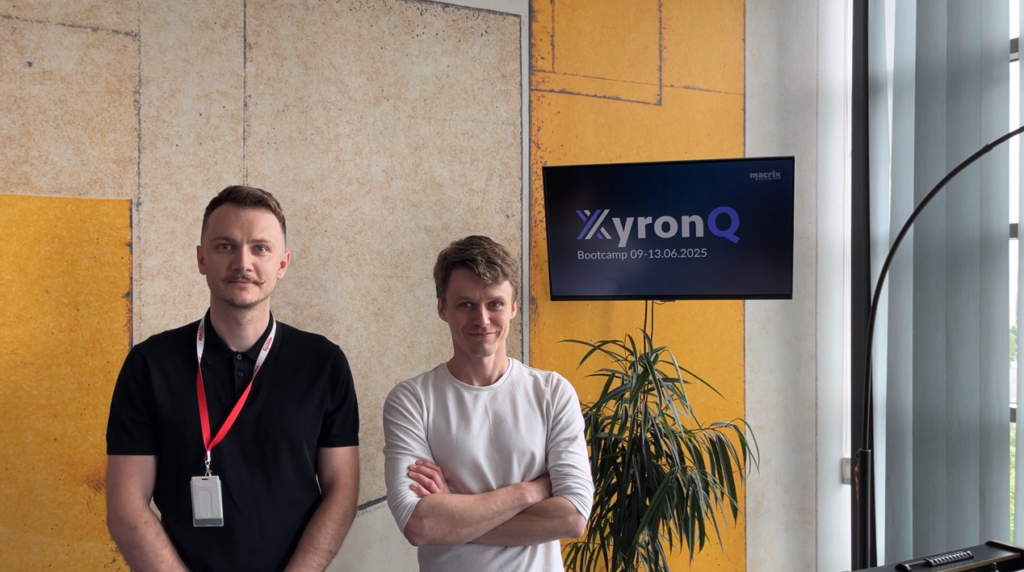
“Organizing events like our bootcamp starts with understanding our stakeholders and finding the right way to connect all the groups involved. It’s a true cross-department effort where every detail matters: from aligning with our engineers’ schedules, to booking hotels, to making sure the right food arrives at the right time. The goal is to ensure everything runs smoothly, with no disruptions, and ultimately delivers a satisfying and successful experience for everyone involved.”
Dominika Kirschenstein
“We’ve got a solid R&D team, so there’s a lot of knowledge-sharing going on. As a apart of SquadronQ, we’re also lending a hand with the main bootcamp, helping out as routing and order experts. Just making sure the guys don’t get lost along the way.”
Wojciech Doroszkiewicz & Mateusz Zybała
Key achievements: real-time communication, 3D visualization, system integration
We delivered a working end-to-end demonstration where a simulated pallet flows through our transport network from start to finish. Each movement step gets triggered by simulated events, and the 3D viewer tracks the pallet’s position and equipment status in real-time. Elsa workflows handle the orchestration behind the scenes, with all events logged and traceable throughout the system.
During the bootcamp, the team built the foundation for handling basic inbound warehouse processes. But more importantly, they created a flexible structure that can be reused to design and implement other warehouse workflows. That’s the real value – not just what was built, but how it was built.
With the core architecture in place, we’re ready to shift from concept to reality: scaling the solution, testing new scenarios, and preparing for production deployment.
